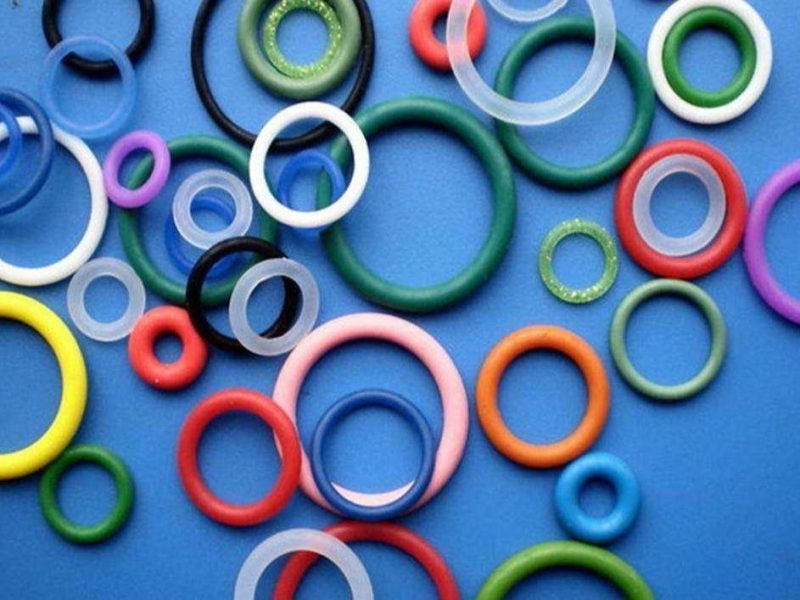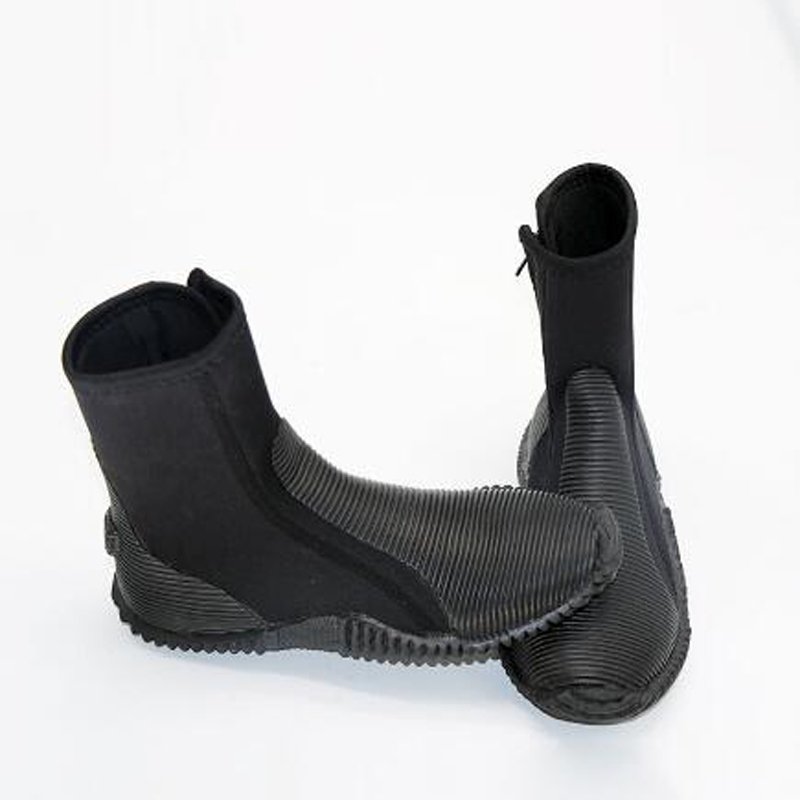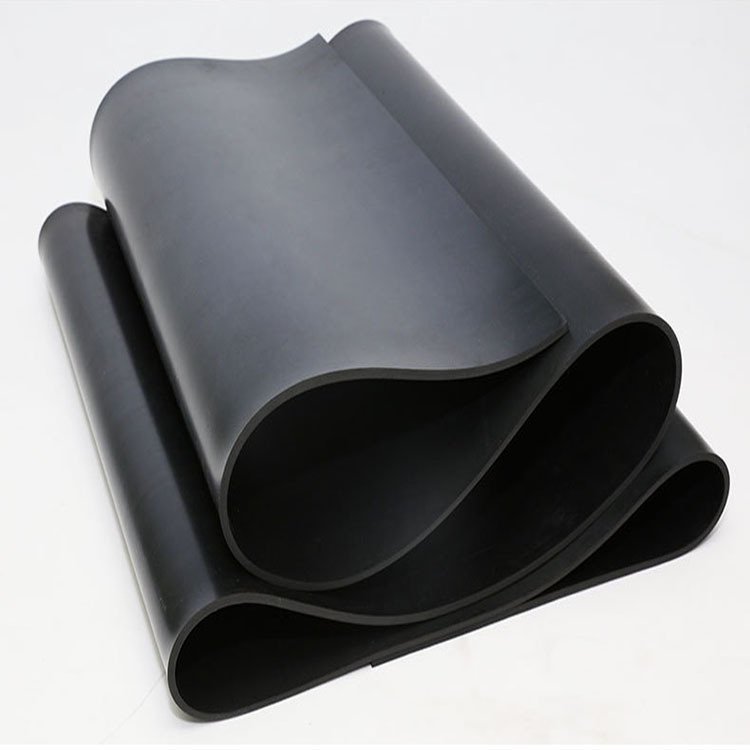Neoprene Rubber: The Ultimate Guide to Its Properties and Applications

Why Neoprene Is Still the Go-To Material for Industrial and Consumer Products
In the ever-evolving world of synthetic materials, neoprene rubber remains a trusted workhorse. From wetsuits to automotive gaskets, medical braces to industrial seals, its versatility, chemical resistance, and durability have kept it relevant for nearly a century. But why does this material remain so dominant—and what makes it ideal for both flexible fashion applications and rigid engineering demands?
Neoprene rubber is a synthetic elastomer made from chloroprene monomers. It offers excellent resistance to weather, chemicals, temperature, and mechanical stress, making it ideal for marine, automotive, and industrial use.
For B2B product developers and sourcing professionals, understanding neoprene’s capabilities—and its many grades and formats—is critical to making the right material choice. Whether you’re sourcing for protective covers, sealing components, or vibration-dampening systems, this guide breaks down what you need to know.
Stick with us and you’ll see why companies from Ford to Nike—and a growing number of startups—continue to rely on neoprene for innovation that lasts.
What Is Neoprene Rubber and How Is It Manufactured?
Neoprene is the commercial name for polychloroprene, a synthetic rubber first developed by DuPont in 1930. It is formed through the polymerization of chloroprene monomers, resulting in a rubber-like material with exceptional weather, ozone, and heat resistance.
There are two main forms of neoprene:
- Solid neoprene rubber used in seals, gaskets, pads, etc.
- Foamed (cellular) neoprene, commonly used in wetsuits, orthopedic products, and soft goods.
Neoprene rubber is a synthetic elastomer made by polymerizing chloroprene monomers. It can be produced in solid or foamed forms and is widely used across industries for its durability and chemical resistance.
Manufacturing Process and Key Variants
1. Chloroprene Polymerization
- Base chemicals undergo emulsion polymerization.
- Resulting polychloroprene latex is processed into sheets or molded parts.
2. Compounding and Vulcanization
- Additives such as carbon black, plasticizers, and stabilizers enhance strength, flexibility, and resistance.
- Sulfur vulcanization improves elasticity and thermal durability.
3. Foaming Process (for Cellular Neoprene)
- Gases like nitrogen or CO₂ are injected to create closed-cell structures.
- This results in lightweight, insulating neoprene foam.
Types of Neoprene Rubber by Structure
| Type | Characteristics | Typical Use Cases |
|---|---|---|
| Solid Neoprene | Dense, strong, non-porous | Gaskets, washers, mounts |
| Open-Cell Foam | Soft, compressible, breathable | Padding, soundproofing |
| Closed-Cell Foam | Waterproof, insulating, buoyant | Wetsuits, medical braces, marine cushions |
A German automotive supplier uses solid neoprene sheet as a sealing gasket in engine compartments. It retains elasticity at high temperatures and resists oil leaks—key to reducing maintenance costs and meeting ISO/TS 16949 standards.
What Are the Key Mechanical and Chemical Properties of Neoprene?

Neoprene’s strength lies in its balanced set of mechanical, thermal, and chemical properties. It doesn’t specialize in one extreme—like silicone’s heat resistance or nitrile’s oil tolerance—but instead provides moderate-to-high performance across the board.
That’s exactly why it’s so popular across industries that require durable yet flexible materials.
Neoprene rubber offers excellent tensile strength, compression set resistance, chemical stability, and thermal performance, making it ideal for multi-industry use.
Mechanical and Chemical Property Table
| Property | Typical Value Range | Performance Benefit |
|---|---|---|
| Tensile Strength | 7–17 MPa | Resists tearing under load |
| Elongation at Break | 250–500% | High stretch without failure |
| Hardness (Shore A) | 30–90 | Range from soft foam to hard gaskets |
| Compression Set | < 30% | Returns to shape after pressure |
| Temperature Resistance | -40°C to +120°C | Suitable for outdoor & engine environments |
| Oil and Fuel Resistance | Moderate | Suitable for splash but not immersion |
| Weather/Ozone Resistance | Excellent | Long-term outdoor use without degradation |
| Flame Resistance | Optional FR grades available | For transit, industrial, or defense applications |
Key Functional Advantages of Neoprene
1. Weather and UV Resistance
Unlike natural rubber, neoprene resists cracking and brittleness when exposed to sunlight, wind, rain, or ozone.
2. Thermal Stability
Stays flexible in sub-zero conditions and holds structure in high heat—making it useful for automotive, marine, and electrical insulation.
3. Shock and Vibration Absorption
Neoprene’s elasticity and density make it a go-to material for anti-vibration mounts, footwear, and protective gear.
4. Chemical Resistance
Handles exposure to acids, alkalis, refrigerants, and oils better than many other synthetic rubbers.
A U.S.-based HVAC company switched to medium-hardness solid neoprene for air compressor mounts. The result? Reduced noise by 32%, improved vibration control, and extended machine lifespan by 18 months.
How Does Neoprene Compare to Other Synthetic Rubbers Like EPDM or Nitrile?
Neoprene is often compared with other elastomers like EPDM (Ethylene Propylene Diene Monomer) and Nitrile (NBR – Nitrile Butadiene Rubber). Each has its strengths, and the right choice depends on the specific performance requirements of your application—whether it’s oil exposure, UV protection, or extreme temperature handling.
Neoprene occupies the middle ground, offering balanced resistance to weather, chemicals, and heat—making it a versatile general-purpose rubber.
Neoprene provides balanced resistance to oil, weather, heat, and chemicals, making it more versatile than EPDM or Nitrile in mixed-environment applications.
Comparative Performance Table
| Property | Neoprene | EPDM | Nitrile (NBR) |
|---|---|---|---|
| Weather Resistance | Excellent | Excellent | Poor |
| Oil & Fuel Resistance | Moderate | Poor | Excellent |
| Heat Resistance | Good (-40 to 120°C) | Good (-50 to 130°C) | Fair (-35 to 100°C) |
| Chemical Resistance | Good | Excellent (acids) | Moderate (oils) |
| Flame Resistance | Optional grades | Poor | Optional grades |
| Cost | Moderate | Low | Low |
| Common Use | Multi-purpose | Outdoor seals | Fuel systems |
Use-Case Scenarios
1. Use Neoprene When:
- The product will face moderate oil, UV, and temperature stress.
- You need versatility in changing weather or mixed-use conditions.
- You want moderate durability at competitive cost.
2. Use EPDM When:
- The main concern is UV or ozone exposure (e.g., roofing membranes, door seals).
- The environment includes acids or water-based chemicals, not oils.
3. Use Nitrile When:
- You need strong oil/fuel resistance, such as in gaskets, O-rings, and fuel hoses.
- Outdoor exposure is minimal.
A marine electronics brand tested all three rubbers for a control panel cover exposed to saltwater, sunlight, and internal oil mist:
- Neoprene lasted 14 months without cracking or softening.
- EPDM showed oil absorption within 6 months.
- Nitrile degraded after 9 months due to UV exposure.
Which Industries Commonly Use Neoprene Rubber and Why?

Thanks to its unique combination of durability, flexibility, and resistance, neoprene is used across dozens of industries—ranging from consumer sportswear to critical defense and industrial systems.
It’s the go-to material when you need something that performs well in harsh conditions without breaking the bank.
Neoprene rubber is widely used in automotive, marine, sportswear, electronics, medical, and industrial sectors for insulation, shock absorption, sealing, and waterproofing.
Neoprene Applications by Industry
| Industry | Application Example | Why Neoprene? |
|---|---|---|
| Automotive | Seals, hoses, suspension bushings | Withstands heat, oil, and vibration |
| Marine | Hatch gaskets, wetsuits, covers | Water-resistant, UV-stable |
| Industrial Machinery | Mounts, pads, belts, gloves | Chemical and abrasion resistant |
| Consumer Sportswear | Wetsuits, braces, gloves, shoe soles | Thermal insulation, stretch |
| Electronics | Cable insulation, grommets, protective sleeves | Fire-retardant, shock-absorbing |
| Construction | Expansion joints, vibration isolation | Flexible and durable under load |
| Medical & Orthopedic | Knee braces, back supports | Lightweight, breathable foamed variants |
| Aerospace & Defense | Vibration dampeners, insulation layers | Flame-resistant, compressible, tough |
1. SzoneierFabrics – Sports and Medical Gear
Szoneier supplies closed-cell neoprene laminated with nylon to global clients manufacturing knee sleeves, compression vests, and sports braces. A US-based fitness brand reported:
- 40% fewer customer complaints due to better sweat management.
- 12-month durability with weekly use.
2. OEM Automotive Gasket Supply
An Indian Tier-2 automotive vendor sources 3mm solid neoprene sheet from Szoneier for use in AC vent seals. It withstands temperature cycling from -30°C to +90°C without cracking.
Is Neoprene Rubber Resistant to Weather, Chemicals, and Flames?
Yes, neoprene rubber is engineered to resist a wide range of environmental threats including UV exposure, ozone degradation, moderate oil contact, saltwater corrosion, and even flame (in certain grades). These characteristics are what make it a top performer in outdoor, industrial, and marine applications.
Neoprene rubber resists weather, chemicals, and moderate flames. It performs well in outdoor, marine, and industrial environments due to its ozone, UV, and heat resistance.
Resistance Performance Matrix
| Resistance Type | Performance Rating | Description & Notes |
|---|---|---|
| UV & Ozone | ★★★★★ (Excellent) | Maintains elasticity and appearance outdoors |
| Water & Saltwater | ★★★★★ (Excellent) | Non-absorbent, ideal for marine uses |
| Chemicals (acids/bases) | ★★★★☆ (Good) | Tolerates mild acids, alkalis, and cleaning agents |
| Oil & Fuel | ★★★☆☆ (Moderate) | Suitable for splash, not long-term submersion |
| Flame (FR grades) | ★★★★☆ (Good) | UL94 V-0 or ISO 6941 certified versions available |
| Heat & Cold | ★★★★☆ (Good) | Operates from -40°C to +120°C |
Special Formulations for High Resistance
1. Flame-Retardant Neoprene (FR Neoprene)
- Formulated with halogenated additives.
- Meets UL94 V-0 and ISO 6941 fire safety standards.
- Used in mass transit, aerospace, and electrical insulation.
2. Oil-Resistant Neoprene Blends
- Neoprene blended with nitrile or EPDM for enhanced oil resistance.
- Common in fuel hose gaskets and industrial seals.
3. Weatherproof Neoprene Foam
- Closed-cell structure and UV inhibitors make it suitable for rooftop HVAC gaskets, door seals, and marine hatch linings.
Use Case: Industrial Oil-Exposed Environments
A Brazilian oil refinery sourced flame-retardant neoprene pads from SzoneierFabrics for electrical panel insulators. The pads:
- Retained form and elasticity after 1 year of oil vapor exposure.
- Passed flame spread testing (ISO 6941).
- Reduced panel insulation failure rate by 27%.
What Are the Different Forms of Neoprene Rubber (Foam, Sheet, Solid)?

Neoprene rubber is incredibly flexible—not just in use, but also in format. Depending on the application, it can be purchased as solid sheets, rolls, foams, coated fabrics, or even custom-molded parts.
Choosing the right form is crucial for balancing strength, insulation, compression, and flexibility in your product.
Neoprene rubber is available in foam, solid sheets, rolls, and laminated fabrics. Each form is tailored for specific uses like insulation, sealing, padding, or wearables.
Types of Neoprene Forms
| Form Type | Description | Common Applications |
|---|---|---|
| Solid Neoprene Sheets | Dense, non-porous, durable | Gaskets, seals, engine mounts |
| Closed-Cell Neoprene Foam | Lightweight, waterproof, buoyant | Wetsuits, braces, marine cushions |
| Open-Cell Neoprene Foam | Soft, air-permeable, compressible | Padding, noise-dampening, fashion linings |
| Laminated Neoprene Fabric | Neoprene + nylon/polyester outer shell | Sportswear, medical braces, laptop sleeves |
| Adhesive-Backed Neoprene | Comes with peel-off adhesive layer | Weatherproofing, stick-on seals |
| Die-Cut Neoprene Parts | Pre-cut custom shapes from sheets | Technical seals, industrial covers |
Real-World Example: Multi-Format Sourcing
A European camping gear brand worked with SzoneierFabrics to develop:
- 5mm laminated neoprene foam for thermal sleeping pads.
- 3mm die-cut solid neoprene washers for tent pole tension systems.
- Open-cell foam scraps repurposed for cushioned backpack straps.
The result? A high-performance, fully-integrated product line—built from one material but optimized in three different forms.
How Do You Select the Right Grade of Neoprene for Your Application?
Not all neoprene is created equal. It comes in a wide variety of grades, thicknesses, densities, and reinforcements, each engineered for specific demands. Selecting the correct grade ensures performance durability, product safety, and cost-efficiency—especially for B2B buyers who need reliability across bulk production.
To select the right neoprene grade, consider factors like density, thickness, flame resistance, and environmental exposure. Choose based on mechanical and chemical needs.
Key Selection Criteria
1. By Density and Hardness
- Low-density (30–50 Shore A): Soft foams for wearable items, padding, and braces.
- Medium-density (50–70 Shore A): For weather stripping, insulators, and shock pads.
- High-density (70–90 Shore A): Industrial gaskets, engine mounts, structural uses.
2. By Thickness
- 1–3 mm: Flexibility-focused products (e.g. gloves, yoga mats, laptop sleeves).
- 4–7 mm: Marine and sportswear requiring thermal insulation and compression.
- 8–15 mm: Seals, vibration dampening blocks, or heat shielding.
3. By Performance Enhancements
| Requirement | Grade Type / Additive |
|---|---|
| Flame resistance | UL94 V-0 neoprene with halogenation |
| Oil exposure | SBR/Neoprene blend or nitrile-infused |
| Anti-static or conductive | Carbon-black loaded neoprene |
| Waterproofing | Closed-cell CR neoprene |
4. By Surface Lamination
- Nylon or polyester lamination: For durability and abrasion resistance in wearables.
- Uncoated: For seals, gaskets, technical parts needing no textile exterior.
A Canadian cold-weather gear brand used 5mm nylon-laminated CR neoprene with 250% elongation for snowmobile gloves. It balanced:
- Thermal insulation in -20°C.
- Water resistance under active use.
- Long-term wear resistance without cracking.
What Should B2B Buyers Know When Sourcing Custom Neoprene Rubber Products?

For B2B procurement teams and product developers, sourcing neoprene is about more than specs. It’s about verifying performance, ensuring compliance, and choosing a supplier that offers customization, transparency, and quality assurance.
B2B buyers should assess neoprene performance, supplier capability, certifications, MOQs, and customization options when sourcing reliable neoprene rubber products.
B2B Sourcing Checklist
| Sourcing Factor | Why It Matters |
|---|---|
| Material Composition | Determines oil/flame/weather resistance |
| Certifications | UL94, ISO 6941, OEKO-TEX®, GRS for safety and compliance |
| MOQ & Sampling | Flexibility for prototyping or small-batch production |
| Lamination & Customization | Branding, performance tuning, design optimization |
| Lead Time & Supply Chain | Critical for production planning and global logistics |
| Quality Control Standards | Prevents defects and ensures consistency |
| Environmental Credentials | Sustainability and regulatory compliance |
What SzoneierFabrics Offers
SzoneierFabrics is a trusted Chinese neoprene rubber manufacturer with over 18 years of experience serving B2B clients across:
- Automotive, marine, consumer sportswear, medical, industrial, and defense industries.
Our Strengths:
- 🧵 Customization: Lamination, thickness, width, logo printing, and die-cutting
- 🔬 Quality: SGS, TUV, UL94, ISO 6941 certified neoprene grades
- 📦 Flexible MOQs: Starting from 100 meters
- 🧪 Free Samples: Available within 7–10 days
- 🌍 Global Service: Export-ready with multilingual support and logistics coordination
Ready to Source High-Quality Neoprene Rubber with Confidence?
Whether you need neoprene for wetsuits, seals, braces, or industrial parts—SzoneierFabrics is your end-to-end manufacturing partner. Our team works with brands, OEMs, and wholesalers to deliver precision-engineered, performance-tested neoprene fabric in both solid and foam formats.
Can't find the answers?
No worries, please contact us and we will answer all the questions you have during the whole process of bag customization.
Make A Sample First?
If you have your own artwork, logo design files, or just an idea,please provide details about your project requirements, including preferred fabric, color, and customization options,we’re excited to assist you in bringing your bespoke bag designs to life through our sample production process.



